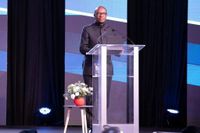South Africa’s automotive industry, once a symbol of the nation’s manufacturing prowess, is now facing a wave of challenges that threaten its very foundation. Over the past two years, a combination of low domestic sales, a flood of imported vehicles, and persistently low levels of local content have led to the closure of 12 companies and the loss of more than 4,000 jobs, according to South Africa’s Minister of Trade, Industry and Competition, Parks Tau. Speaking at an auto parts conference in Gqeberha on August 13, 2025, Tau painted a sobering picture of an industry under siege.
“These pressures have triggered 12 company closures and over 4,000 job losses in two years,” Tau told delegates, as reported by Reuters. His words echoed a growing sense of urgency that has gripped industry leaders and policymakers alike. With South Africa’s automotive sector directly employing 115,000 people—more than 80,000 of whom work in component manufacturing—the stakes could hardly be higher.
At the heart of the crisis lies a sharp decline in the sales of locally produced vehicles. In 2024, only 515,850 South African-made cars were sold, falling well short of the ambitious South Africa Automotive Masterplan 2035 target of 784,509 units. The gap isn’t just a matter of missed numbers; it’s a symptom of deeper structural problems. Approximately 64% of vehicles sold in the country are imports, a figure that has steadily eroded the market share of domestic producers.
Adding to these woes is the issue of localisation—the extent to which vehicles are assembled and components are manufactured within South Africa. Localisation rates have stagnated at 39%, far below the government’s goal of 60%. This lag not only weakens the industry’s competitiveness but also limits the economic benefits that should flow to local workers and suppliers.
“Localisation is not merely policy compliance, it is existential. A 5% increase in local content would unlock 30 billion rand in new procurement, dwarfing the 4.4 billion rand U.S. export market,” Tau emphasized. His remarks underscore the potential for local content to drive growth, create jobs, and reduce the sector’s vulnerability to global shocks.
But the challenges don’t end at home. The international landscape has shifted, too, creating new headwinds for South African manufacturers. In April 2025, the United States imposed steep tariffs on South African cars and automotive parts, dealing a significant blow to the country’s exports, which are valued at 28.7 billion rand (about $1.64 billion). These tariffs, set at 30% by U.S. President Donald Trump, have had immediate and painful consequences for South African companies that rely on American contracts.
Experts warn that the impact of these tariffs is already being felt in the form of lost contracts and further job insecurity. In response, South Africa submitted a revised trade offer to Washington on August 12, 2025, in the hope of persuading U.S. officials to lower the tariff burden. The outcome of those negotiations remains uncertain, but the stakes are clear: failure to secure relief could mean more closures and job losses in an industry already stretched to the breaking point.
The government’s response has been to review and expand its incentive schemes, with a particular focus on boosting local content in both vehicle and component manufacturing. “The South African government is reviewing incentives to increase local content in vehicle and component manufacturing,” Tau reiterated, as reported by the Department of Trade, Industry and Competition. The new and improved incentives now include support for electric vehicles and related components, aiming to future-proof the industry and attract new investment.
This pivot toward electric vehicles is not just about keeping pace with global trends; it’s also a calculated effort to create new opportunities for local suppliers and workers. By encouraging the assembly of electric vehicles and the production of their components in South Africa, the government hopes to build a more resilient and innovative automotive sector.
Industry leaders, too, have sounded the alarm. The head of BMW in South Africa recently warned of an “existential crisis” facing the country’s automotive sector, according to reports referenced by the Department of Trade, Industry and Competition. Such warnings are not issued lightly. They reflect a growing consensus that without decisive action, the industry could face a downward spiral of declining investment, shrinking employment, and lost technological know-how.
Despite the grim headlines, there are some glimmers of hope. International manufacturers are beginning to see opportunities in South Africa’s efforts to localise production. Stellantis, the multinational automaker behind brands like Peugeot, Fiat, and Jeep, is preparing to break ground on a new facility in the Eastern Cape province. Meanwhile, China’s Chery is also exploring plans to localise production in the country. These moves could bring much-needed investment and technological expertise, as well as new jobs, to regions hit hard by recent closures.
Still, the road ahead is fraught with uncertainty. The success of these localisation efforts will depend on a range of factors: the effectiveness of government incentives, the ability of local suppliers to meet international quality standards, and the willingness of global automakers to commit to long-term partnerships in South Africa. It will also hinge on the outcome of trade negotiations with the United States and the industry’s ability to adapt to the fast-changing landscape of electric mobility.
For many in the industry, the message is clear: South Africa must act quickly to reverse the tide of job losses and company closures. The government’s renewed focus on localisation, coupled with its support for electric vehicles, represents a step in the right direction. But as Tau and other leaders have made clear, more will be needed to restore confidence and put the sector back on a path to growth.
As the dust settles from the latest round of closures and layoffs, workers, suppliers, and communities across South Africa are left waiting—hoping that the next chapter in the nation’s automotive story will be one of resilience and renewal, rather than further decline.




